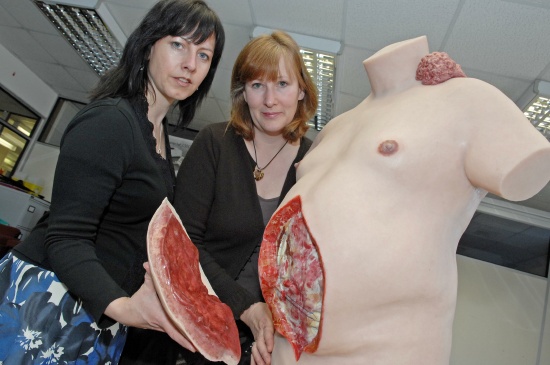According to the Tissue Viability Team at the University of Hertfordshire School of Nursing and Midwifery, around 200,000 peoople in the UK will have a chronic wound, like a pressure ulcer, at any given time. In addition to the pain and suffering caused by these non-healing wounds, the financial costs of their management are high for both the government and the patient.
Non-healing wounds frequently result in extended hospital stays and increased risk of complications such as infections.
To address the greater training requirements for chronic wounds, Julie Vuolo, a lecturer at the School, joined with Tina Moore, a third year Model Design student, to develop a three-dimensional model complete with a pressure ulcer; a surgical incision which can be removed to reveal a large abdominal wound and a removable fungating tumor.
They named him George.

Traditionally, wound care has been taught to students through high-quality photographs and video but George can be used to facilitate discussion about a whole range of tissue viability issues including wound measurement, pressure ulcer grading, dressing application, and wound bed preparation. He can also be used to trigger reflective discussion about difficult cases seen in clinical practice, so that wound care students can learn how to assess and manage wounds.
“The fact that George was designed by wound care experts with specific wound care learning outcomes in mind means he far exceeds the standard achieved by existing models on the market,” said Julie Vuolo. “But the real success of George can be attributed to the need of many nurses to be actively engaged in the learning process. To this end George brings tissue viability alive in a way that the even the best of photographs could never do."
The model was developed as part of the CABLE project (an HEA funded Pathfinder project involving eleven academic Schools within the University of Hertfordshire).






Comments